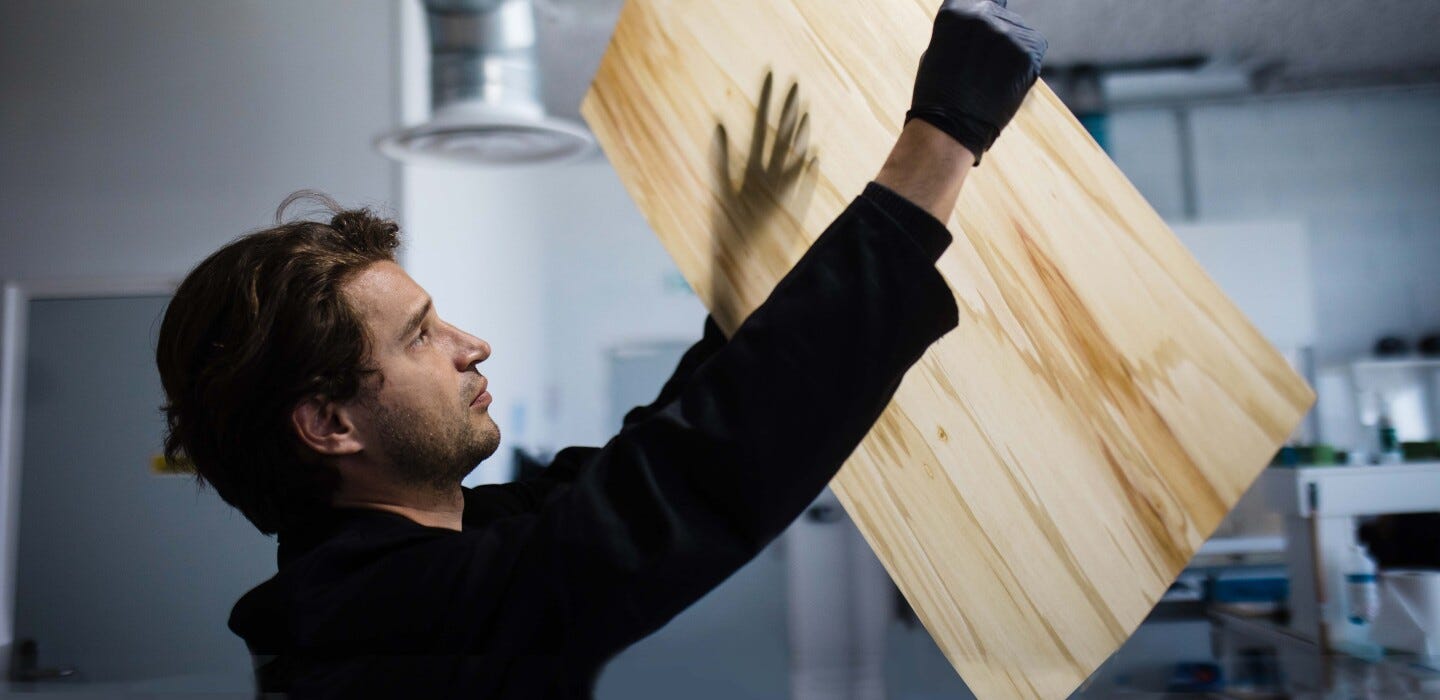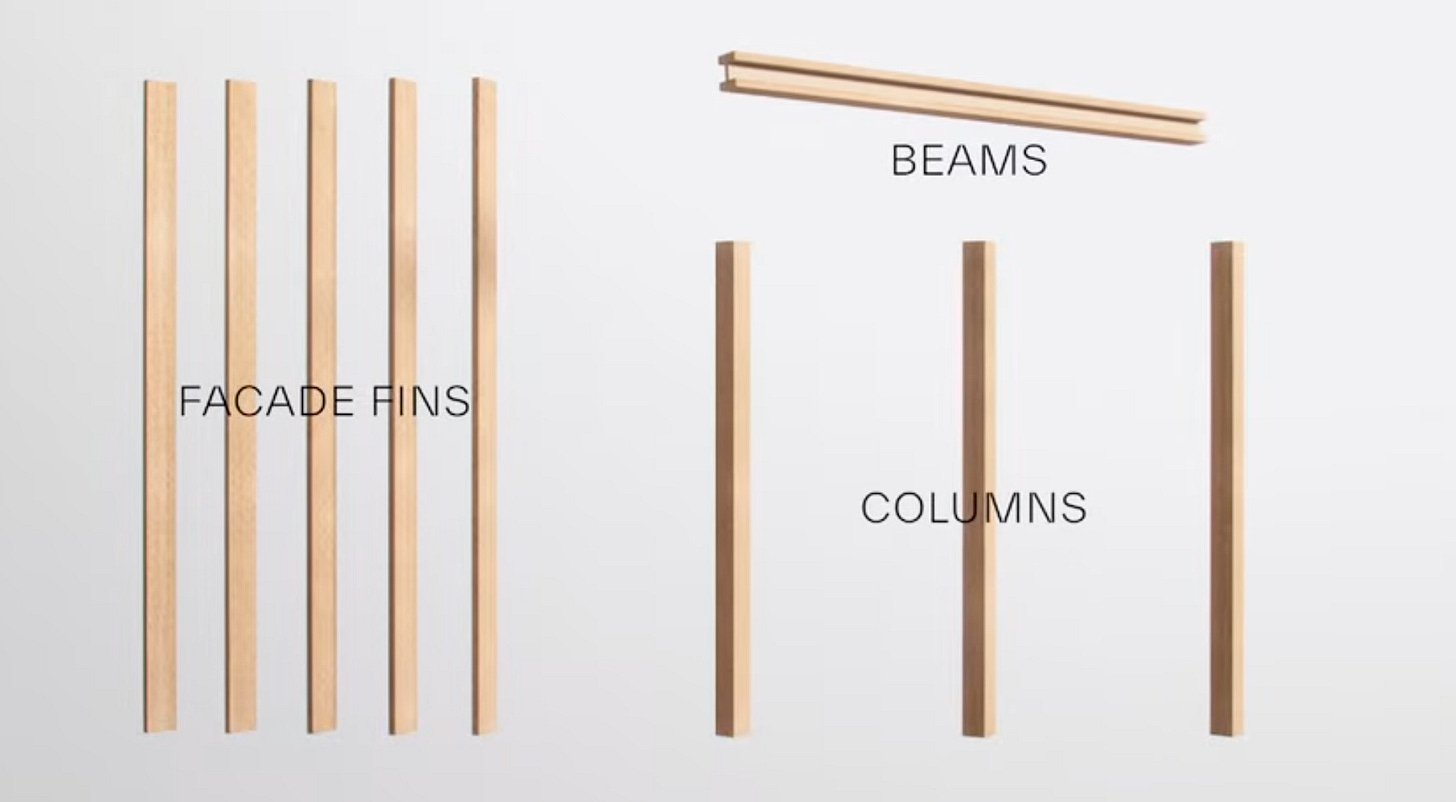#71 Woodoo
Turning low-quality wood into a super material
Read time: 5 minutes
Hi, I’m Javi Gascón.
This is Climate Tech Distillery, a newsletter where I talk about one specific climate tech company every week.
Today we’ll distill a company that’s transforming faulty wood into a super strong, flexible, low-carbon material that can replace traditionally polluting construction materials: Woodoo 🇫🇷
Want to sponsor Climate Tech Distillery? Here’s all the info.
What Problem Does Woodoo Tackle❓
They tackle the fundamental limitations that prevent wood from replacing carbon-intensive materials in construction:
1. Construction's Massive Carbon Footprint: Steel and concrete are responsible for 16% of global greenhouse gas emissions. Buildings consume 40% of the world's energy, with 2/3 of that tied to material production.
2. Unsustainable Wood Harvesting: The push for lower-carbon alternatives like cross-laminated timber is increasing demand for high-quality wood, leading to significant deforestation.
3. Wood's Limitations: Traditional wood simply can't compete with steel and concrete in structural applications. It lacks the strength, durability, and consistent performance characteristics needed for modern construction, forcing builders to stick with carbon-intensive materials.
4. Supply Chain Dependencies: Most construction relies on imported materials and high-grade wood from distant forests. This creates expensive, carbon-heavy supply chains.
Product / Service 📦
Woodoo creates their flagship product called STACK. They make "augmented wood" by removing lignin (the "glue" that weakens wood) and replacing it with bio-based resins to transform low-grade wood into high-performance building materials.
Performance: It’s 7x stronger than concrete. It's waterproof, rot-resistant, dimensionally stable and flame-retardant. Materials can even be made translucent while maintaining structural integrity.
Versatility: Thanks to it’s features and flexibility in design it can be used for construction (structural panels, facades), automotive (interior panels), and electronics (tactile displays) that beat traditional materials on every metric.
Cost: No "green premium”. It has the price of low-grade wood. Materials are priced for everyone, including developing markets.
Convenience: Standardized materials that integrate seamlessly with existing construction systems. Builders can work 2x faster than with concrete, and the materials require no changes from industry professionals or specialized training.
Sustainability: Uses low-grade, diseased, or damaged wood (which climate change will make abundant) that would otherwise be wasted and rot (emitting CO₂).The product is carbon-negative, avoids deforestation and replaces high-emission materials.
Market 🌐
The global green building materials market was valued at over $330 billion in 2023 and is projected to surpass $670 billion by 2032. Demand is driven by sustainability goals and the need to reduce carbon emissions in construction.
Other Key Players
InventWood 🇺🇸: Develops Superwood, an ultra-strong, densified wood that's stronger than steel, for use in construction and automotive sectors.
Ecovative 🇺🇸: Produces mycelium-based (mushroom-root) materials for biodegradable insulation, packaging, and structural panels.
Woodoo is the only one using discarded wood as raw material.
Founding Story 🦄
Woodoo was founded in 2017 by French architect, chemist and entrepreneur Timothée Boitouzet. While studying at Harvard and working as an architect, he became increasingly frustrated with the unsustainable materials dominating the construction industry.
He began exploring ways to transform wood into a high-performance, low-carbon alternative and ended up developing the patented nanotechnology process that now is the backbone of Woodoo.
In just a few years they have become the most awarded startup in Europe, they’ve raised a $31 million seed round, and their super materials are being used in all sorts of projects all around the world.
Top Impact Stats 📈
1. CO₂e emissions 229x lower than aluminum, 149x lower than steel and 20x lower than concrete.
2. Up to 475x less energy-intensive than aluminum, 130x less than steel and 17x less than glass.
3. Woodoo wood captures more CO₂ than it emits (carbon-negative). Their process stores around 1 tonne of CO₂ per cubic meter of material.
Whenever you’re ready, there are 2 ways I can help you:
Scale and optimize your climate business: I build low-code automation systems for climate companies so they can free up time to scale their revenues and their climate impact.
Give visibility to your climate company: Get your company in front of an audience of thousands of climate players and enthusiasts by sponsoring newsletter issues and LinkedIn posts.
Thanks for reading today’s issue! If you liked it feel free to hit the ❤️ button and share it with someone who might like it too. See you Saturday Aug. 30th :)









